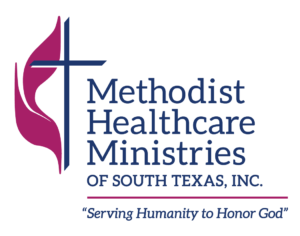Over recent years, climate change-focused reports like those from the Intergovernmental Panel on Climate Change have warned that climatic consequences are growing exponentially, and without rapid climate action, the outcomes for vulnerable communities will be disastrous. In fact, thousands of individuals migrate to escape these various climate-induced natural disasters throughout the globe. Estimates from the World Bank in 2018 stated that by 2050, regions of Latin America, sub-Saharan Africa, and South Asia, will see upwards of 143 million climate migrants – those forced to leave their homes due to short-term or long-term environmental hazards. Climate change is a prominent reason for migration; hundreds of individuals immigrate to Texas from Latin America because of this. However, as the National League of Cities reports, there’s also internal climate migration within the U.S. that deserves more attention.
The new report “The Next American Migration” provides a unique framework elucidating what defines a city as vulnerable, a recipient, or a destination city while aiding in risk assessment and population growth projections. The report also demonstrates how certain communities – elderly, children, low-income households, and individuals with medical disabilities – are more affected by climate change, and therefore will have an increasingly difficult time with migration caused by inhabitable environmental conditions. In the U.S. alone, roughly one-third of the population experienced extreme weather just this last summer, and in 2020 weather-related disasters displaced over 1.7 million Americans, according to the report.
Insightful tools like the FEMA national risk index map highlights the various environmental risks that communities face, including those that cause climate migration. This map illustrates which regions of the U.S. are more easily affected by floods, droughts, and hurricanes, but also the region’s social vulnerability, expected annual loss, and community resilience. An examination of the FEMA map demonstrates which regions will face future climate migration challenges, and which regions will be safe haven cities. But, how do we define which cities are vulnerable, what cities are safe havens, and which are in between?
Lucky for us, the NLC’s report defines exactly that. A vulnerable city is one where a majority of the area experiences continual threats from climate change-induced hazards and threats. Recipient cities are those that experience less harm than vulnerable cities. However, if numerous climate refugees migrate to these recipient cities, then the region would face shortened resources and a state of emergency. However, climate destination cities are drastically different. Climate destination cities are those that can manage their climate impacts and have adequate resources to deal with extreme weather events while proactively developing and implementing resiliency plans.
Defining what category a city can fall into helps provide awareness and understanding of the city’s current resiliency status and preparedness for future climate change issues and migration. Climate migration will have large impacts, albeit variations of intensities, on every state through changes in population, especially in larger quantities, where a city’s resources, investments, housing, and culture can be negatively effected. The NLC report says it’s unlikely that states have considered climate change in their population modeling, therefore, the population influx estimations can be incorrect, and a challenge itself. Proactive steps that mitigate and prepare for these impending internal migrations can improve a community’s resiliency, keep harm at bay, and safeguard their economy.
Internal migration, the report’s focus, can be a neglected part of the migration discourse, especially considering the disheveled immigration crisis in Texas. However, there’s no better time than the present to prepare for the “Next American Migration”, as moving from state to state has become a more relevant occurrence. Such as the large influx of migration from California to areas of Texas and the east coast, although that is influenced by various factors. Climate migration will soon become a dominating reason in people’s deciding factor in moving from vulnerable cities to destination cities.
The National League of Cities’ delicate framework is a guiding document aiding in future decision-making of local governments, who are tasked with protecting and ensuring their community’s resiliency.

